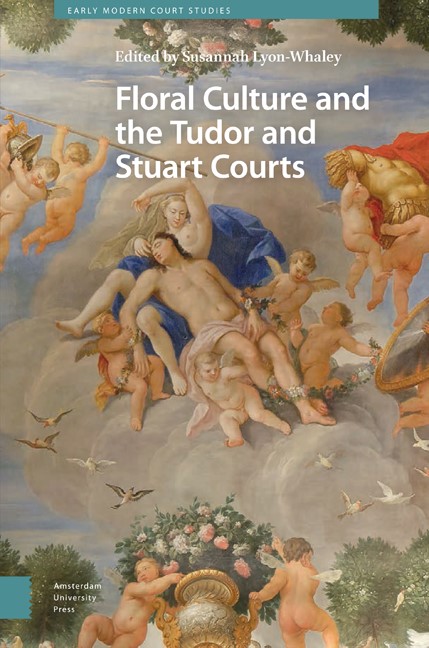Introduction: Flowers and the Courts
Published online by Cambridge University Press: 16 April 2024
Summary
Abstract
In the sixteenth and seventeenth centuries, flowers enthralled men and women, kings and artists, gardeners and scientists. This introduction charts the development of a distinctive floral culture in the English court and its extended circles from the beginning of the Tudor dynasty till the twilight of the Stuarts. While flowers have long registered in various histories, this volume aims to bring different floral disciplines—visual and material culture, literature, gardens, medicine, and foodstuffs—together. Real or representations, flowers mattered in court culture, bound to local ambitions and enmeshed with the most violent aspects of colonisation during these centuries, in which members of the court—and their desire for flowers—played a leading role.
Keywords: Tudor; Stuart; gardens; nature; imperialism
Talking Flowers
In 1629, English herbalist John Parkinson (1567–1650) dedicated Paradisi in Sole Paradisus Terrestris, a book of the ‘pleasant flowers’ of the garden, and the ‘herbes, rootes, & fruites’ of the kitchen garden and orchard, to nineteenyear- old Queen Henrietta Maria (1609–1669). Parkinson described his book of flowers as a ‘speaking Garden, that it might informe you in all the particulars of your store, as well as wants, when you cannot see any of them fresh vpon the ground …’
Parkinson's flowers ‘speak’ through shapes and colours of England as a ‘paradise.’ Yet the language of flowers in the early Stuart court was not meant for the queen's ears alone. In 1614, male courtiers danced on-stage as flowers for the marriage of James VI/I's (1566–1625) favourite, Robert Carr, earl of Somerset (1587–1645), to the recently divorced Frances Howard (1590–1632). Appearing before the king, these ‘happy flowers’ had their ‘leaves’ transformed to ‘fine hair,’ ‘stalks to bodies,’ ‘sprigs to limbs,’ ‘verdure to fresh blood,’ and ‘smell’ to ‘breath.’ Sometime later, the poet Lady Hester Pulter (1605–1678) was to anthropomorphise her own garden of plants.
- Type
- Chapter
- Information
- Floral Culture and the Tudor and Stuart Courts , pp. 19 - 44Publisher: Amsterdam University PressPrint publication year: 2024

